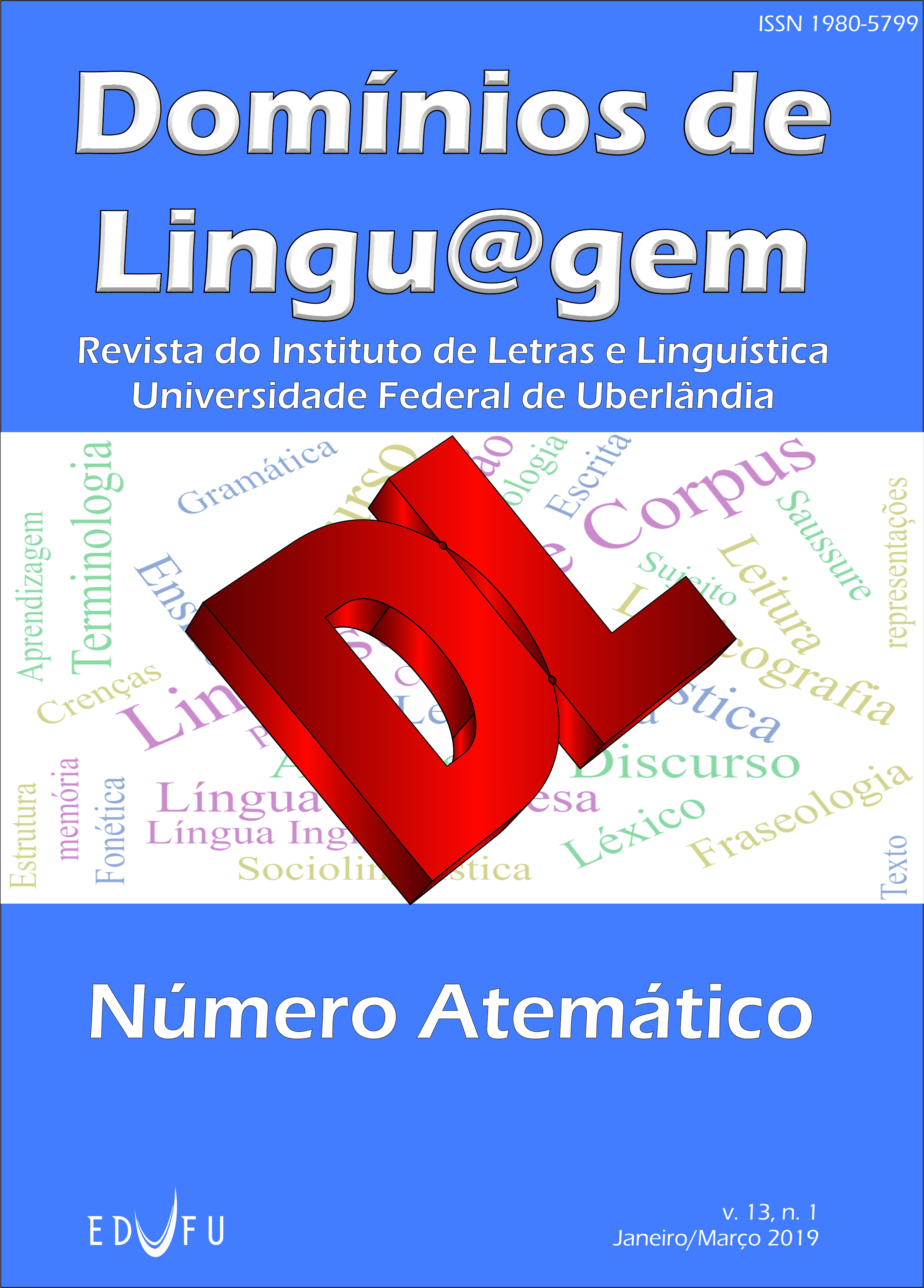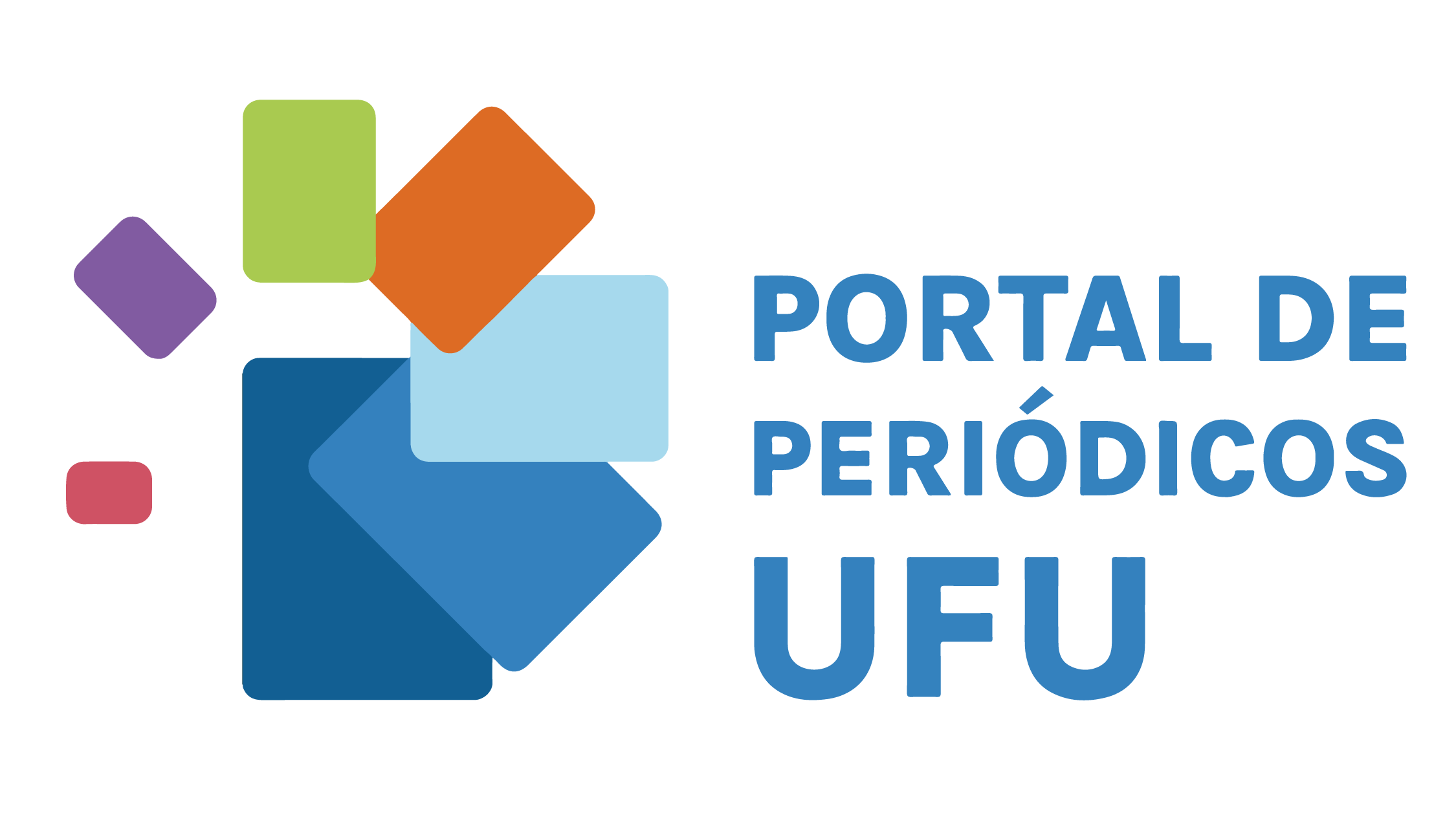The interaction between the instructional treatment and the student development readiness in the process of acquisition of the clitics of third persons of Spanish
DOI:
https://doi.org/10.14393/DL37-v13n1a2019-9Keywords:
Clitics of third person, Instruction with a focus on form, SpanishAbstract
In this study, we analyzed and discussed the interaction between the readiness to develop students with more and less time of study and the instructional intervention destined to the teaching of the clitics of third persons of Spanish by Brazilian university students. Data were submitted to the International Business Machine Statistical Package for Social Studies software (SPSS). This study included 10 participants from a public university. The results suggested evidence contrary to the Teachability Hypothesis.
Downloads
Metrics
References
BARDOVI-HARLIG, K.; COMAJOAN, L. Order of Acquisition and Developmental Readiness. In: SPOLSKY, B.; HULT, F. (org.). The Handbook of Educational Linguistics. Australia: M. Blackwell Publishing, 2008. DOI https://doi.org/10.1002/9780470694138.ch27
CRUZ, M. L. O. B. Estágios de interlíngua: estudo longitudinal centrado na oralidade de sujeitos brasileiros aprendizes de espanhol. 2001. 316 f. Tese (Doutorado em Estudos da Linguagem) – Universidade Estadual de Campinas (UNICAMP), Campinas, 2001.
DOUGHTHY, C; WILLIAMS, J. Focus on form: theory, research, and practice. (ed). Focus on form in classroom second language acquisition. Cambridge: CUP, 1998.
DOUGHTY, C. Second language instruction does make a difference: Evidence from an empirical study of ESL relativization. Studies in Second Language Acquisition, 13 (2), 431-469.
ELLIS, R. Introduction: Investigating form-focused instruction. Language Learning, S1: Supplement 1, p. 1-46, 2001. DOI https://doi.org/10.1111/j.1467-1770.2001.tb00013.x
ELLIS, R.; LOEWEN, S.; ELDER, C.; ERLAM, R.; PHILP, J.; HAYO, R. Implicit and Explicit Knowledge in Second Language Learning, Testing and Teaching. Bristol: Short Run Press, 2009.
GONZÁLEZ, N. T. M. Cadê o pronome? O gato comeu. 1994. 451 f. Tese (Doutorado em Letras), Universidade de São Paulo (USP), São Paulo, 1994.
KONSTANTOPOULOS, S.; HEDGES, L. Meta-Analysis. In: KAPLAN, D. (ed.). Handbook of Quantitative Methodology for the Social Sciences. New York: Sage, p. 281-297, 2004.
KLEE, C. A. The acquisition of clitic pronouns in the Spanish interlanguage of Quechua speakers: A contrastive case study. Hispania, v. 72, p. 402-408, 1989. DOI https://doi.org/10.2307/343164
LYSTER, R.; RANTA, L. Corrective feedback and learner uptake negotiation of form in communicative classroom. Studies in second Language Acquisition (SSLA), v.9, p. 37-66, 1997.
MEISEL, J.; CLAHSEN, H.; PIENEMANN, M. On determining developmental stages in natural second language acquisition. Studies in Second Language Acquisition, v. 3 (2) 109-35, 1981. DOI https://doi.org/10.1017/S0272263100004137
NORRIS, J.; ORTEGA, L. Effectiveness of L2 instruction: A research synthesis and quantitative meta-analysis. Language Learning, 50, 417-528, 2000. DOI https://doi.org/10.1111/0023-8333.00136
PIENEMANN, M. Psychological constraints on the teachability of languages. Studies in Second Language Acquisition, 6 (2), 186-214, 2008. DOI https://doi.org/10.1017/S0272263100005015
PIENEMANN, M. Learnability and syllabus construction. In: HYLTENSTAM, K.; PIENEMANN, M. (ed.). Modeling and assessing second language acquisition. Clevedon, Avon: Mutilingual Matters, 1985. p. 23-75.
PIENEMANN, M. Is language teachable? Applied Linguistics, 10 (1) 52-79, 1989. DOI https://doi.org/10.1093/applin/10.1.52
PIENEMANN, M. Determining the influence of instruction on L2 speech processing. Australian Review of Applied Linguistics, 10 (2), 83-113, 1983. DOI https://doi.org/10.1075/aral.10.2.07pie
PIENEMANN, M.; JOHNSTON, M.; BRINDLEY, G. Constructing an acquisition-based procedure for second language assessment. Studies in Second Language Acquisition, v. 10, n. 2, p. 217-243, 1998. DOI https://doi.org/10.1017/S0272263100007324
SHINTANI, N.; LI, S.; ELLIS, R. Comprehension-Based Versus Production-Based Grammar Instruction: A Meta-Analysis of Comparative Studies. Language Learning, v. 63, n. 2, 2013 p. 296-329. DOI https://doi.org/10.1111/lang.12001
SWAIN, M. Three functions of output in second language learning. In: COOK, G.; SEIDLHOFER, B. (Orgs.). Principles and practice in applied linguistics: Studies in honour of H. G. Widdowson. Oxford, UK: Oxford University Press, 1995, p. 125-144.
SWAIN, M. Atención a la forma a través de la reflexión consciente. In: DOUGHTY, C.; WILLIAMS, J. (org.). Atención a la forma en la adquisición de segundas lenguas en el aula. Traducción y edición española Editorial Edinumen, 1998.
SWAIN, M. The output hypothesis: Theory and research. In: HINKEL, E. (org.). Handbook on research in second language teaching and learning. New Jersey: Lawrence Erlbaum Associates, 2005, p. 471-483.
SWAIN, M.; LAPKIN, S. Problems in output and cognitive processes they generate: a step toward second language learning. Applied Linguistics, v. 16, p. 371-391, 1994. DOI https://doi.org/10.1093/applin/16.3.371
SPADA, N. Form-focused instruction and second language acquisition: A review of classroom and laboratory research. Language Teaching. 30, 73-87. 1997. DOI https://doi.org/10.1017/S0261444800012799
SPADA, N. Beyond form-focused instruction: Reflections on past, present and future research. Language Teaching, 44, 225-236, 2010. DOI https://doi.org/10.1017/S0261444810000224
SPADA, N. Form-focused instruction: isolated or integrated? TESOL Quartely, 42 (2), 181-207. 2008. DOI https://doi.org/10.1002/j.1545-7249.2008.tb00115.x
SPADA, N.; TOMITA, Y. Interactions between type of instruction and type of language feature: A meta-analysis. Language Learning, 60(2), p. 1-46, 2010. DOI https://doi.org/10.1111/j.1467-9922.2010.00562.x
VILLALBA, T. K. B. A transferência na aquisição da anáfora pronominal em espanhol por universitários brasileiros. 1995. 90 p. Dissertação (Mestrado em Letras), Universidade Federal do Rio Grande do Sul (UFRGS), Porto Alegre, 1995.
Downloads
Published
How to Cite
Issue
Section
License
Authors who publish in this journal agree to the following terms:
Authors retain the copyright and waiver the journal the right of first publication, with the work simultaneously licensed under the Creative Commons Attribution License (CC BY-NC-ND 4.0), allowing the sharing of work with authorship recognition and preventing its commercial use.
Authors are authorized to take additional contracts separately, for non-exclusive distribution of the version of the work published in this journal (publish in institutional repository or as a book chapter), with acknowledgment of authorship and initial publication in this journal.









